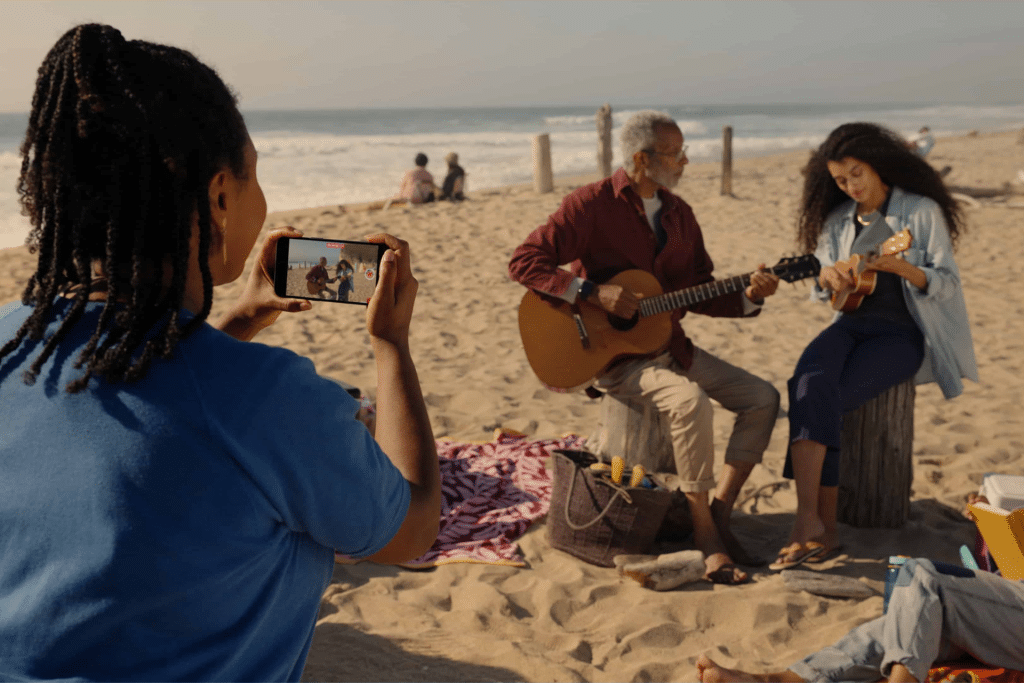Spatial photos and videos use stereoscopic 3D to capture scenes with depth, replicating how human eyes perceive the world. Unlike standard 2D media, which presents a flat image, spatial media incorporates multiple perspectives to create a three-dimensional effect. On compatible devices like the Apple Vision Pro, these files come to life, offering a lifelike view that feels like being present in the captured moment. On other devices, such as iPhones or iPads, they appear as standard 2D media but can be shared and viewed in 3D on supported headsets.
The technology relies on MV-HEVC (Multi-View High-Efficiency Video Coding), which compresses multiple visual perspectives into a single file. A minute of spatial video, recorded at 1080p and 30 frames per second, takes up approximately 130 MB—roughly double the size of a standard video due to the additional data required for depth. This format ensures high-quality playback while keeping file sizes manageable.
Capturing Spatial Media on iPhone
Recording spatial photos and videos on an iPhone is straightforward, especially with models like the iPhone 15 Pro, 15 Pro Max, and the entire iPhone 16 lineup. These devices use their main and ultra-wide cameras simultaneously to capture stereoscopic views, with computational photography aligning the perspectives for a seamless 3D effect. Here’s how to get started:
Open the Camera app on a compatible iPhone running iOS 17.2 or later. Swipe to the Spatial mode, which appears alongside other options like Photo and Video. For videos, rotate the iPhone to landscape orientation and tap the spatial video icon, then press the record button or a volume button to start. For photos, select Spatial Photo mode and tap the shutter. Keep the device steady, frame subjects 3 to 8 feet away, and ensure even, bright lighting for optimal results. A level indicator helps maintain stability during recording.
Captured media is stored in a dedicated Spatial album in the Photos app, syncing across devices via iCloud when enabled. Users should note that low-light conditions or subjects too close to the camera can cause noise or focus mismatches, which may affect the viewing experience.
Capturing Spatial Media on Apple Vision Pro
The Apple Vision Pro headset offers another way to capture spatial photos and videos, ideal for hands-free recording. To start, press the top button to open the Capture window. Select Photo or Video at the bottom, then press the top button again to take a photo or begin recording. For videos, keep your head steady to keep the crosshair within the on-screen circle, minimizing motion that could cause viewer discomfort. Tap the thumbnail in the lower-left corner to preview your capture immediately.
Vision Pro’s spatial media tends to offer greater depth and a wider aspect ratio compared to iPhone captures, but it requires careful movement to avoid nausea-inducing footage. This method is less practical for spontaneous moments due to the headset’s visibility but excels in controlled settings.
Viewing Spatial Media
To experience spatial photos and videos in their full 3D glory, the Apple Vision Pro is the primary device. Open the Photos app on the headset, navigate to the Spatial tab, and select a file. For videos, pinch the play button to start, then use a zoom-in gesture with both hands to enter Immersive view, which expands the content to a life-sized scale with vivid colors and detail. A zoom-out gesture returns to windowed mode.
On iPhones, iPads, Macs, or Apple TVs, spatial media appears as standard 2D content, marked with a “Spatial” label in the Photos app. For alternative 3D viewing, the Meta Quest 3 headset supports spatial videos, offering a more affordable option at $500 compared to the Vision Pro’s $3,500 price tag. Additionally, apps like Spatialify ($4.99) allow conversion of spatial media into formats like anaglyph for viewing with red/cyan glasses on non-VR devices, though the experience is less immersive.
Enhancing the Experience with Apps
Third-party apps like Spatialify and Spatially expand creative possibilities. Spatialify, available for $2.99, enables iPhone 15 Pro and 16 series users to capture spatial photos, not just videos, and supports formats like 4K and 60 fps on compatible devices. Spatially offers advanced features like HDR recording and conversion to formats such as side-by-side or top-bottom, catering to 3D enthusiasts. These apps also allow users to convert 2D photos into spatial formats, though results vary.
Practical Tips for Success
For the best spatial media, lighting and stability are key. Avoid low-light settings, as the ultra-wide camera struggles with noise, and keep subjects within the recommended 3-to-8-foot range to prevent focus issues. When using Vision Pro, minimize head movement to ensure comfortable playback. For iPhone users, consider a gimbal for smoother video capture, especially for dynamic scenes. Experiment with techniques like dolly shots or panning to add depth, but keep movements slow and deliberate.
Sharing is seamless via iCloud, AirDrop, or Messages, but the 3D effect is exclusive to compatible headsets. Encourage viewers to use Vision Pro or Meta Quest 3 for the full experience. For creative storytelling, apps like SpatialGen can optimize streaming for live events or virtual tours, leveraging MV-HEVC for high-quality playback.
Why Spatial Media Matters
Spatial photos and videos offer a transformative way to capture memories, from family gatherings to travel adventures. The immersive depth makes moments feel tangible, whether it’s a child’s birthday or a scenic hike. By making this technology accessible on iPhones, Apple has democratized 3D content creation, though the high cost of Vision Pro limits its audience. The Meta Quest 3 and apps like Spatialify provide budget-friendly alternatives, broadening access to this immersive medium. As platforms like SpatialGen expand support, spatial media could reshape entertainment, education, and virtual tours.
